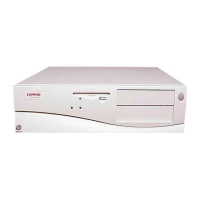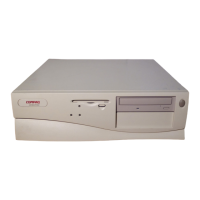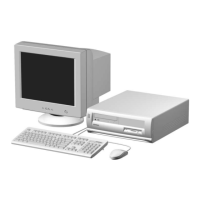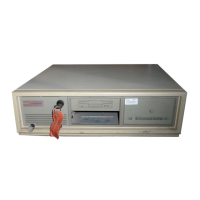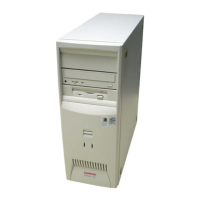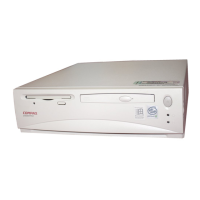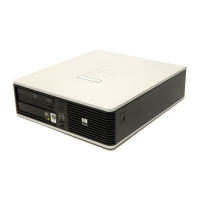6-26 Upgrading the Desktop Computer
Writer: Debbie Thomson Saved by: Alyce Klingler-Castle Saved date: 06/13/97 5:32 PM
Pages: 37 Words: 5251 Template: c:\msoffice\templates\comm.dot
File Name Ch6.doc Part Number 270844-002
■
Every SCSI chain or circuit must be terminated (closed) at
both ends. Termination can be accomplished by using the
terminating feature on the device or by using a terminated
cable.
✎
4X and 8X devices may not have terminating jumpers on
the device. Termination on these devices must be
achieved with terminated cable.
Turn on an external SCSI device before turning on power
to the computer. This enables the system board controller
to recognize the external SCSI device and automatically
reset. When an external SCSI device is connected to the
external SCSI connector on the rear panel of the
computer, that device becomes the end of the SCSI chain
and must be terminated.
■
All SCSI hard drives must be either internal or external, but
never both. However, the system accommodates a
combination of other internal and external SCSI devices,
such as SCSI tape and CD-ROM drives.
✎
When an IDE hard drive and SCSI hard drive are both
installed, the system can boot only from the IDE hard
drive.
✎
Before you can install a SCSI device, you must first
verify the SCSI ID of the drive and, if necessary, set the
SCSI ID to a new number. Be sure that each SCSI device
on the SCSI chain has a unique SCSI ID number.
Second, you must determine if the device ought to have
termination enabled or disabled. Set the termination if
necessary.

